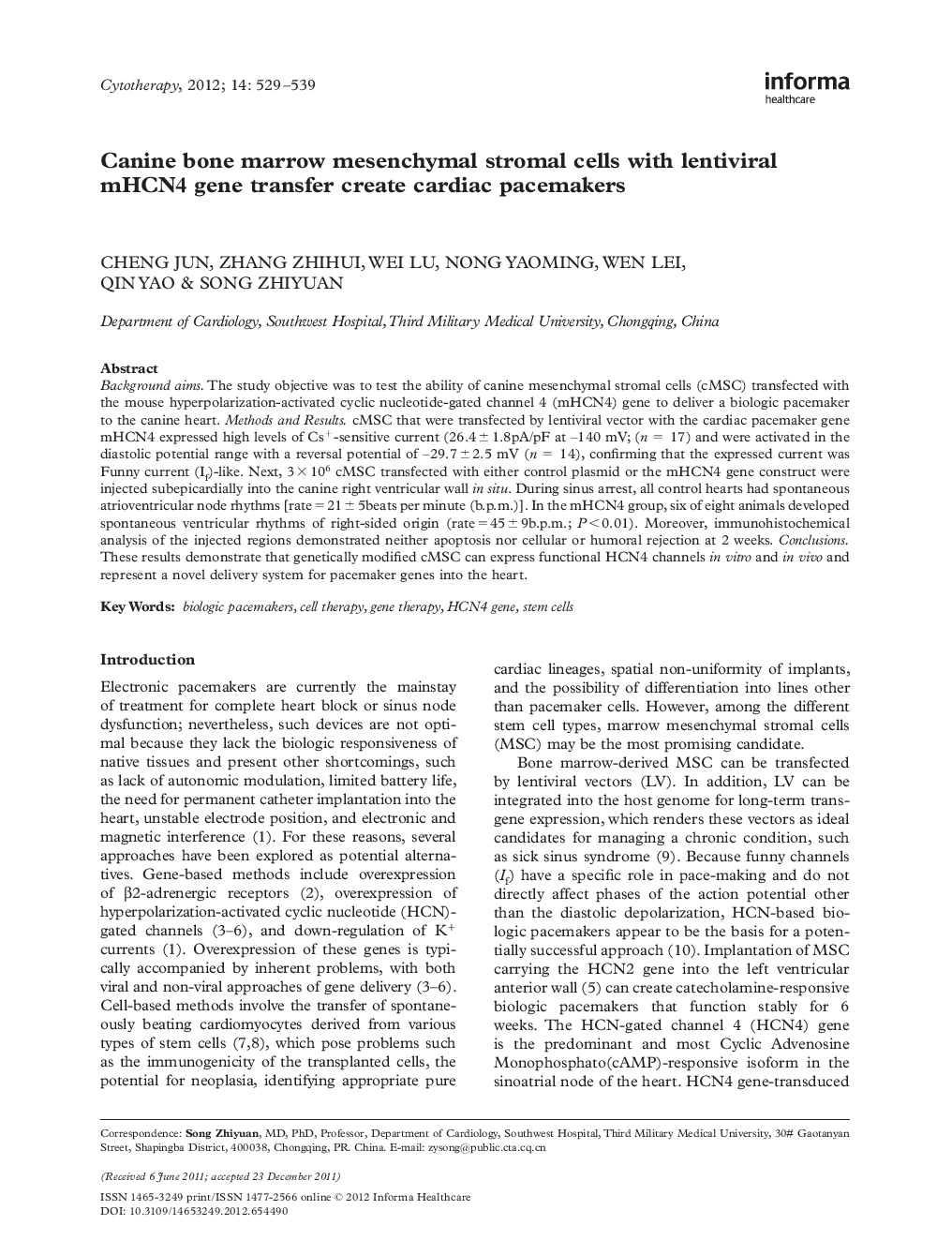| Article ID | Journal | Published Year | Pages | File Type |
|---|---|---|---|---|
| 2172672 | Cytotherapy | 2012 | 11 Pages |
Background aimsThe study objective was to test the ability of canine mesenchymal stromal cells (cMSC) transfected with the mouse hyperpolarization-activated cyclic nucleotide-gated channel 4 (mHCN4) gene to deliver a biologic pacemaker to the canine heart.Methods and ResultscMSC that were transfected by lentiviral vector with the cardiac pacemaker gene mHCN4 expressed high levels of Cs+ -sensitive current (26.4 ± 1.8pA/pF at –140 mV; (n = 17) and were activated in the diastolic potential range with a reversal potential of –29.7 ± 2.5 mV (n = 14), confirming that the expressed current was Funny current (If)-like. Next, 3 × 106 cMSC transfected with either control plasmid or the mHCN4 gene construct were injected subepicardially into the canine right ventricular wall in situ. During sinus arrest, all control hearts had spontaneous atrioventricular node rhythms [rate = 21 ± 5beats per minute (b.p.m.)]. In the mHCN4 group, six of eight animals developed spontaneous ventricular rhythms of right-sided origin (rate = 45 ± 9b.p.m.; P < 0.01). Moreover, immunohistochemical analysis of the injected regions demonstrated neither apoptosis nor cellular or humoral rejection at 2 weeks.ConclusionsThese results demonstrate that genetically modified cMSC can express functional HCN4 channels in vitro and in vivo and represent a novel delivery system for pacemaker genes into the heart.
